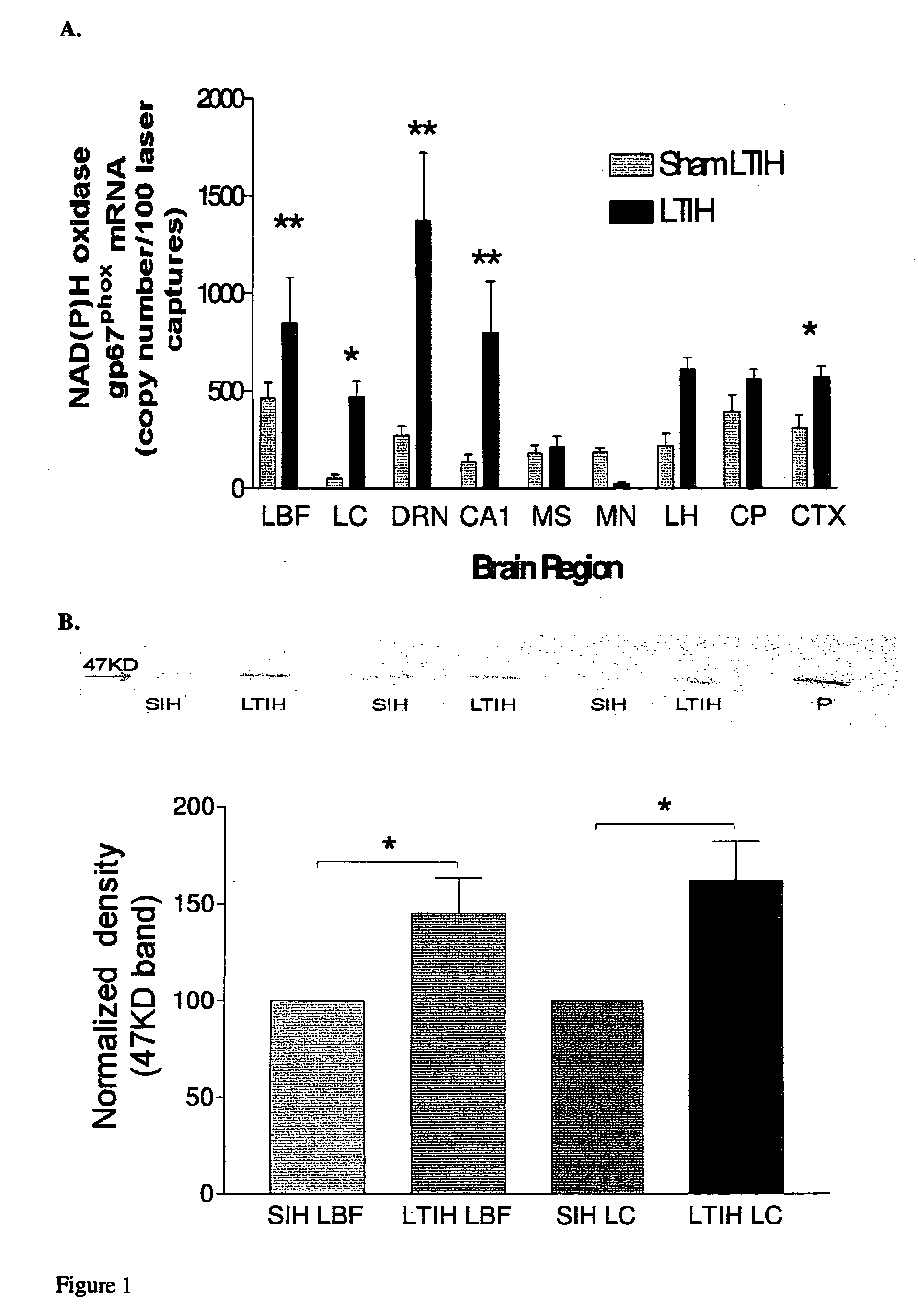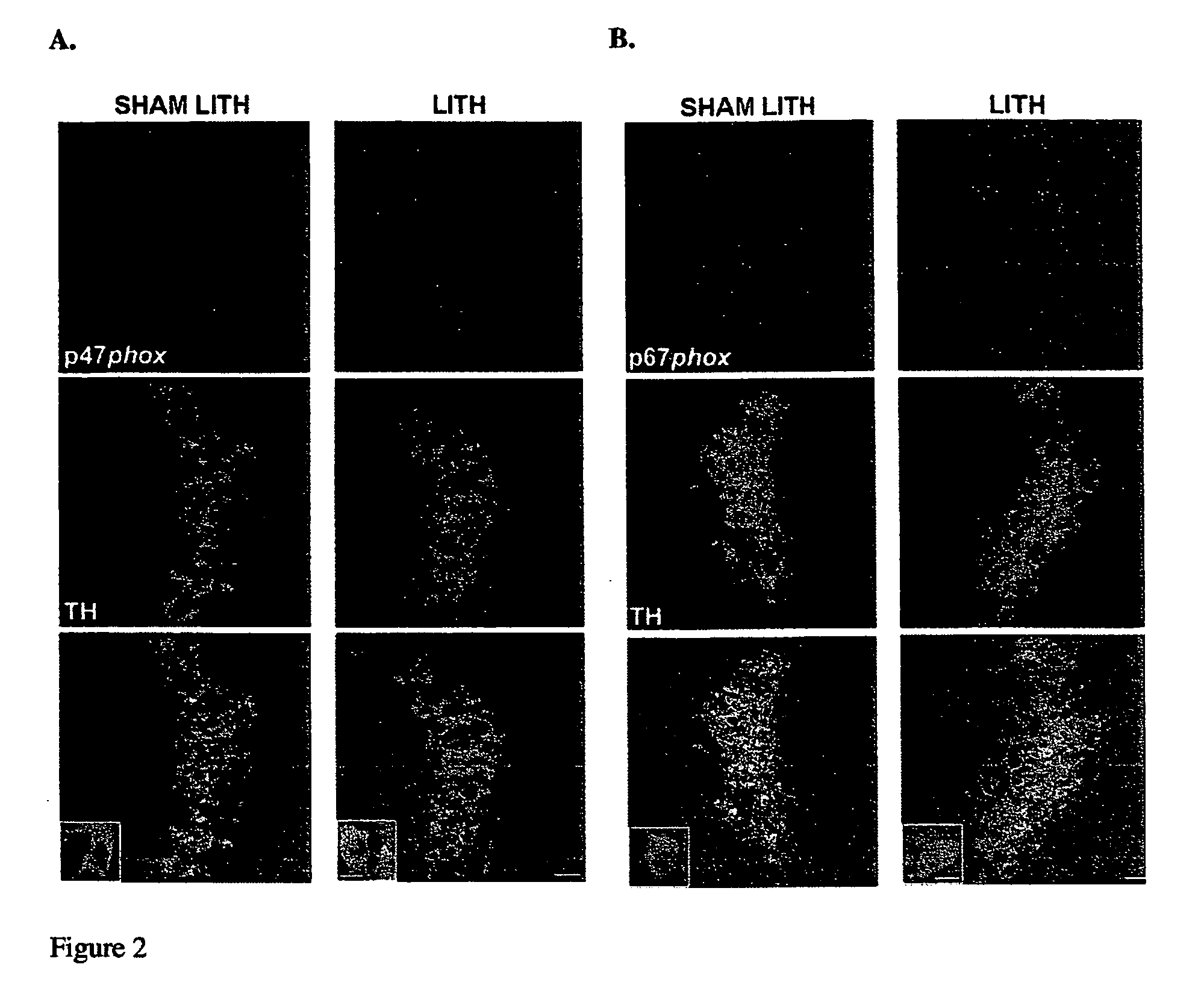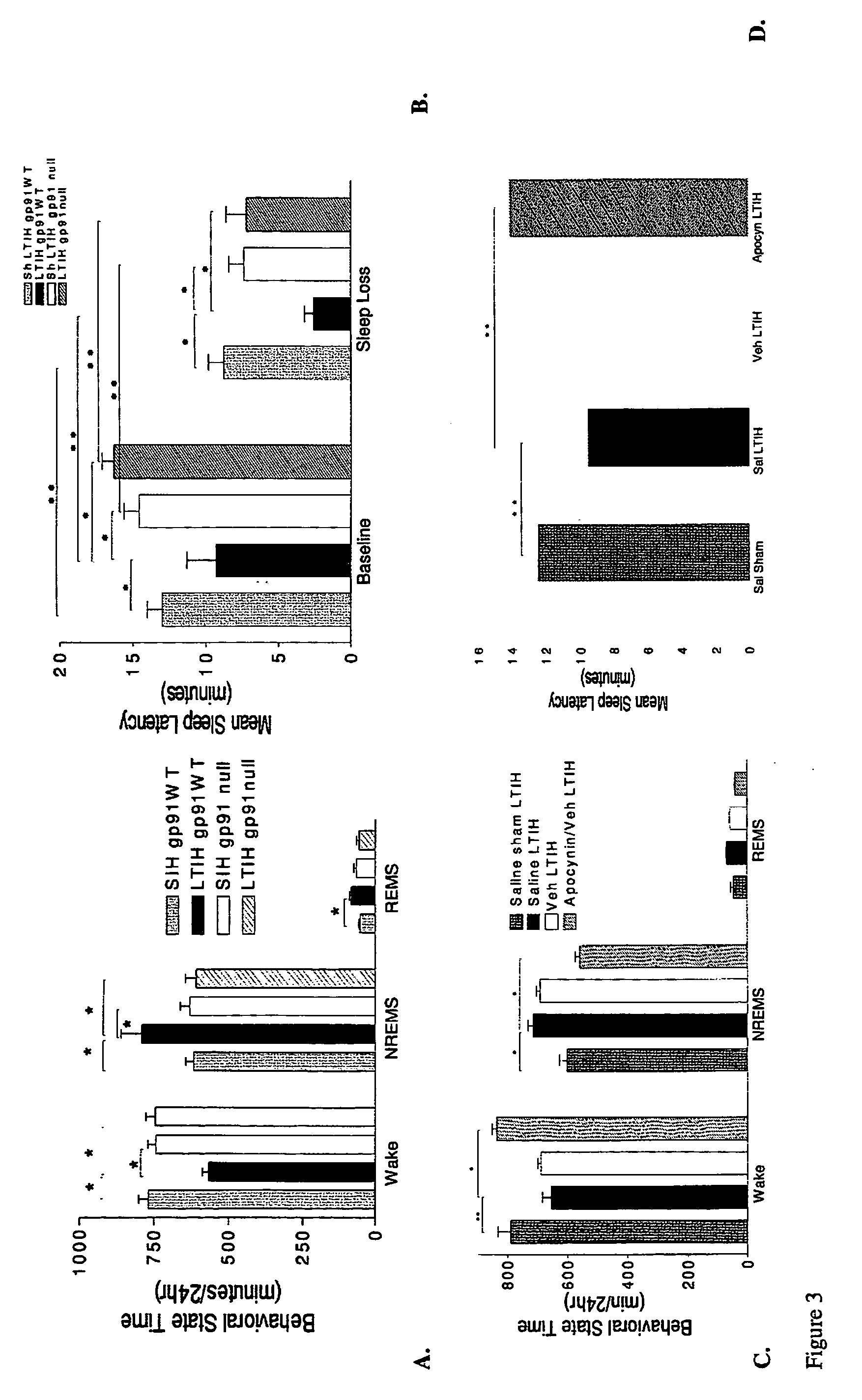NADPH oxidase inhibition pharmacotherapies for Obstructive Sleep Apnea syndrome and its associated morbidities
a technology of obstructive sleep apnea and nadph oxidase inhibitors, which is applied in the direction of drug compositions, metabolic disorders, cardiovascular disorders, etc., can solve the problems of prolonged hypersomnolence and hippocampus-dependent memory impairment with significant oxidative modifications in many brains
- Summary
- Abstract
- Description
- Claims
- Application Information
AI Technical Summary
Benefits of technology
Problems solved by technology
Method used
Image
Examples
example 1
Long-Term Hypoxia / Reoxygenation Increases NADPH Oxidase Gene Expression and Results in Increased NADPH Oxidase in Wake-Active Neurons
[0100] To determine whether long-term intermittent hypoxia (LTIH) increases NADPH oxidase gene expression in wake-active brain regions, NADPH oxidase gene response was measured in discrete brain regions by performing laser-captured microdissections in adult WT mice (n=10 sham LTIH; n=10 LTIH) for Taqman real-time PCR measurement of mRNA copies. LTIH increased NADPH oxidase subunit p67phox gene expression in most, but not all wake-active regions: the lateral basal forebrain (pphox in both regions in WT mice exposed to LTIH (FIG. 1B). p47phox protein as measured by relative density at the 47 KD band increased by 50%, t=2.9, pphox and p47phox immunoreactivity was found in the noradrenergic locus coeruleus neurons (FIG. 2A). Thus, LTIH results in increased NADPH oxidase subunit gene and protein expression in wake-active regions of the brain, and within th...
example 2
Genetic Deletion of NADPH Oxidase Subunit gp91phox Confers Resistance to Long-Term Hypoxia Reoxygenation-Induced Hypersomnolence and Sleepiness
[0101] To establish a critical role for NADPH oxidase in long-term intermittent hypoxia (LTIH) hypersomnolence and sleepiness, a series of gp91phox null and gp91phox wild type (WT) mice were exposed to 8 wks of LTIH or sham LTIH (n=10-12 for each strain / condition) and were then implanted with electroencephalographic and electromyographic electrodes for sleep recordings to compare effect of LTIH on sleep and wakefulness across genotype two weeks after LTIH and sham LTIH were completed.
[0102] The effect of LTIH on wake and sleep times / 24 hr period varied with genotype, F=17.3, pphox null mice were not affected by LTIH; there were no difference across gp91phox null mice across LTIH and sham LTIH for wake time, F=0.7 or NREM sleep times, F=6, as detailed in FIG. 3A. Therefore, genetic deletion of the gp91phox subunit of NADPH oxidase confers re...
example 3
Gp91Phox Null Mice are Resistant to LTIH-Induced Oxidative Protein Damage
[0104] Macrodissections of the lateral basal forebrain and the noradrenergic locus coeruleus were obtained from gp91phox null and WT mice exposed to LTIH or sham LTIH (n=10-11 / strain and condition). The carbonyl content in the lateral basal forebrain in gp91phox null mice relative to WT mice for sham LTIH appeared reduced by approximately 40%; however, this did not reach statistical significance (t=2.9, p=0.05, FIG. 4A). WT mice exhibited an increase in carbonyl content in response to LTIH, relative to sham LTIH, t=3.9, pphox null mice did not show an increase in response to LTIH, N.S. Similar changes were observed in the locus coeruleus region. Thus, genetic deletion of gp91phox prevents the LTIH carbonyl response in representative brain regions contributing to wakefulness control.
[0105] Isoprostane levels were measured in similarly dissected lateral basal forebrain tissue blocks from mice (n=5 / IH condition ...
PUM
| Property | Measurement | Unit |
|---|---|---|
| Morbidity rate | aaaaa | aaaaa |
Abstract
Description
Claims
Application Information
 Login to View More
Login to View More - R&D
- Intellectual Property
- Life Sciences
- Materials
- Tech Scout
- Unparalleled Data Quality
- Higher Quality Content
- 60% Fewer Hallucinations
Browse by: Latest US Patents, China's latest patents, Technical Efficacy Thesaurus, Application Domain, Technology Topic, Popular Technical Reports.
© 2025 PatSnap. All rights reserved.Legal|Privacy policy|Modern Slavery Act Transparency Statement|Sitemap|About US| Contact US: help@patsnap.com



